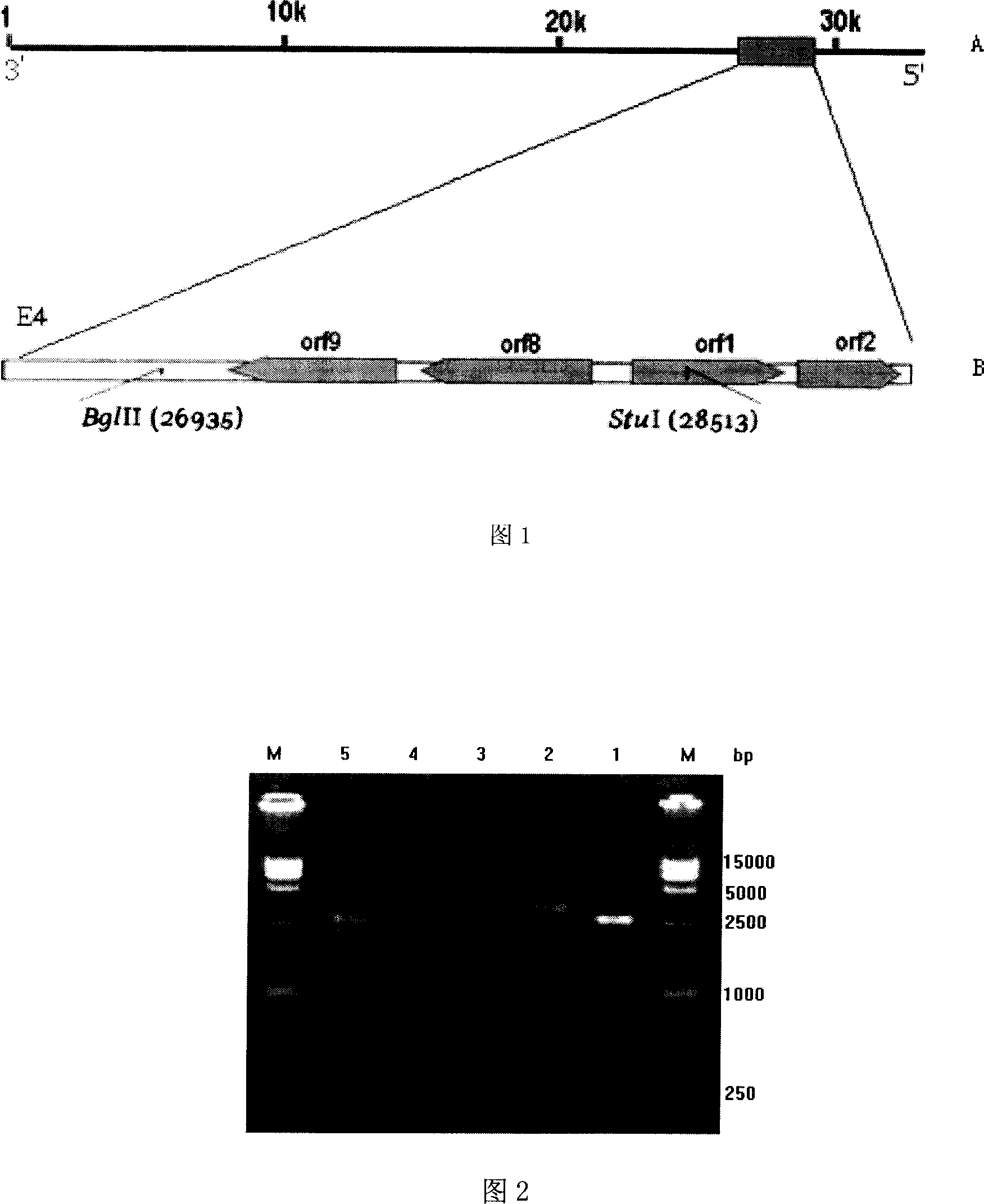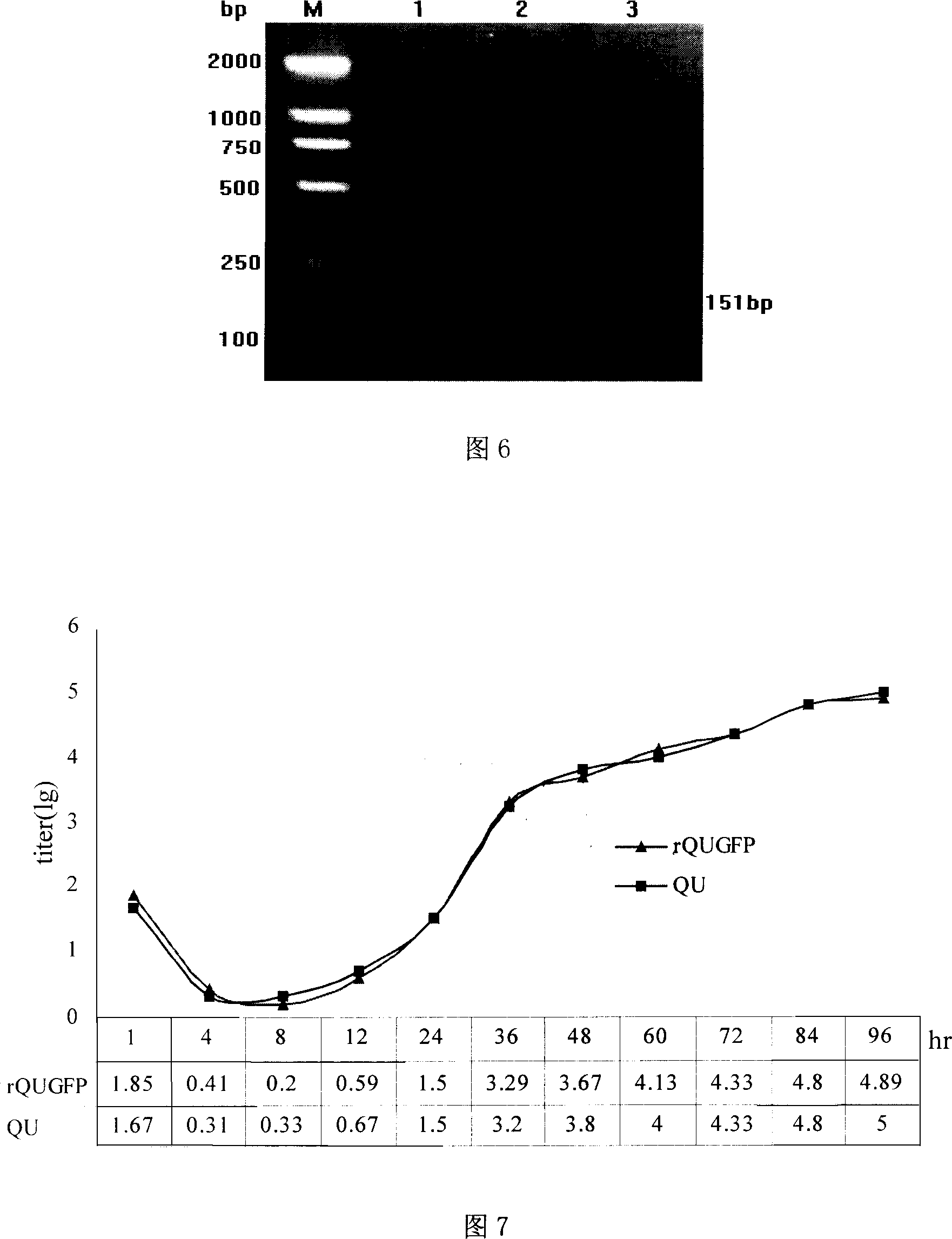Duck adenovirus type 1 virus replication nonessential region fragment screening and its general transporter and recombination obtained therefrom
A virus replication and non-essential region technology, applied in the field of genetic engineering, can solve problems such as difficulties in the application of recombinant viruses
- Summary
- Abstract
- Description
- Claims
- Application Information
AI Technical Summary
Problems solved by technology
Method used
Image
Examples
Embodiment Construction
[0028] 1 Amplification and cloning of recombinant arm
[0029] Primer design: the positive strand primer is 5′-CCGCGGAAGCATTGAATTCTGGAT-3′, and the negative strand primer is 5′-CGCGTGCTGTAACAGGCATTCGTA-3′. Amplify a fragment with a span of 2.73kb, which is located in the E4 region on the right side of the duck adenovirus type 1 virus genome (refer to the GENBANK accession number as Y09598 There are adenovirus sequences, located between 26462 and 29162), as shown in Figure 1.
[0030] Extraction of total viral genome DNA: inoculate duck embryo allantoic fluid with a strain of duck adenovirus type 1 virus QU strain isolated from healthy quails that has no pathogenicity to chickens, ducks and other poultry, centrifuge at 6000g for 10min, and collect the supernatant. Add an equal volume of lysate (containing 0.2mg / mL proteinase K, 1% SDS, 10mmol / L NaCl, 10mmol / L Tris-HCl pH8.0, 1mmol / LEDTA), and place in a 37°C water bath for 3-4 hours. The lysate was extracted with phenol, phen...
PUM
 Login to View More
Login to View More Abstract
Description
Claims
Application Information
 Login to View More
Login to View More - R&D
- Intellectual Property
- Life Sciences
- Materials
- Tech Scout
- Unparalleled Data Quality
- Higher Quality Content
- 60% Fewer Hallucinations
Browse by: Latest US Patents, China's latest patents, Technical Efficacy Thesaurus, Application Domain, Technology Topic, Popular Technical Reports.
© 2025 PatSnap. All rights reserved.Legal|Privacy policy|Modern Slavery Act Transparency Statement|Sitemap|About US| Contact US: help@patsnap.com



